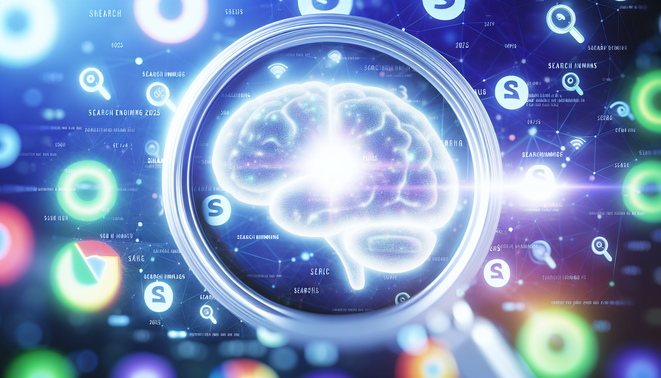Introduction to AI Automation
AI automation refers to the application of artificial intelligence (AI) technologies to automate tasks and processes that traditionally require human intelligence. This includes everything from data analysis and customer service to supply chain management and intricate decision-making processes. The evolution of AI automation began in the mid-20th century with early experiments in machine learning and natural language processing. Over the decades, advancements in algorithms, computing power, and data availability have propelled AI into a central role in business and technology.
Today, AI automation is significant for several reasons. Firstly, it enhances efficiency, allowing organizations to process vast amounts of data and execute tasks faster than human operators. This efficiency leads to cost savings and productivity gains. Secondly, AI automation can improve accuracy, reducing human error in processes ranging from financial transactions to diagnostics in healthcare. Furthermore, businesses leveraging AI automation are better positioned to innovate and compete in a rapidly changing market [Source: Forbes].
Key Technologies Driving AI Automation
AI automation is bolstered by several core technologies that play pivotal roles in its development and implementation:
- Machine Learning (ML): This technology enables systems to learn from data. According to Forbes, ML is integral in automating decision-making processes, improving operational efficiency.
- Natural Language Processing (NLP): NLP allows machines to understand human language, enhancing applications like chatbots and sentiment analysis. Breakthroughs in NLP techniques have significantly transformed technology interactions [Source: Nature].
- Robotics: Integrating AI with physical machines, robotics enhances task automation in sectors like manufacturing, as noted by McKinsey.
- Computer Vision: This technology interprets visual information, playing a critical role in sectors like healthcare and automotive. The potential of computer vision has been greatly enhanced by advances in deep learning [Source: MIT Technology Review].
Benefits of Implementing AI Automation in Business
AI automation transforms business operations, offering numerous benefits:
- Cost Savings: Automating repetitive tasks leads to reduced labor costs. McKinsey reports that efficiency gains can boost profitability by up to 30% [Source: McKinsey].
- Efficiency Improvements: AI excels at handling large data volumes quickly, resulting in a 20% increase in operational efficiency, according to Gartner [Source: Gartner].
- Error Reduction: AI significantly decreases human error rates by executing tasks with greater precision, with studies indicating up to 90% error reduction [Source: Harvard Business Review].
Industry Applications of AI Automation
AI automation is making significant strides across various industries:
- Healthcare: AI is enhancing patient care through predictive analytics and robotic surgery systems [Source: Health Affairs].
- Finance: Streamlining operations and managing risk, AI is instrumental in fraud detection and predictive analytics [Source: Forbes].
- Manufacturing: AI is optimizing production processes, notably reducing operational costs and minimizing human error [Source: McKinsey & Company].
- Customer Service: Chatbots provide round-the-clock service, helping businesses allocate human resources more effectively [Source: Gartner].
Challenges and Risks Associated with AI Automation
While beneficial, AI automation presents challenges and risks:
- Ethical Concerns: There are important ethical considerations regarding bias in AI decision-making systems [Source: The New York Times].
- Job Displacement: Automation threatens to displace millions of jobs, particularly in manufacturing [Source: McKinsey].
- System Reliability: Increasing reliance on AI poses risks of failures and cybersecurity vulnerabilities [Source: World Economic Forum].
The Future of AI Automation
The future holds exciting predictions for AI automation, with intelligent automation likely to rise. Companies are expected to adopt collaborative robots that complement human workers [Source: Forbes]. Additionally, AI is predicted to enhance supply chain management significantly, addressing vulnerabilities exposed during the pandemic [Source: BCG].
Moreover, the necessity of ethical considerations in AI usage will rise, balancing innovation with regulatory compliance [Source: World Economic Forum]. The integration of edge computing with AI will also empower real-time processing capabilities, an essential advancement for sectors like manufacturing [Source: Gartner].
Getting Started with AI Automation
Businesses looking to adopt AI automation can follow a series of practical steps:
- Identify Use Cases: Evaluate areas in your organization that can benefit from automation. High-impact use cases often include payroll processing or inventory management [Source: McKinsey].
- Assemble a Cross-Functional Team: Gather a team from IT, operations, and business units for a comprehensive approach to implementation.
- Select the Right Tools: Research various AI automation platforms suitable for your needs.
- Start Small and Scale: Begin with a pilot project to test AI technology, measuring performance before broader implementation [Source: Forbes].
- Train Your Team: Invest in training programs to prepare staff to work effectively with AI technologies.
- Monitor and Optimize: Continuously assess AI systems using defined KPIs to identify areas for improvement.
- Study Successful Implementations: Learn from organizations that have successfully integrated AI automation, like Netflix’s use of machine learning for user personalization [Source: Harvard Business Review].
Conclusion
In conclusion, the potential of AI automation to transform business operations is significant. Not only does it enhance efficiency and accuracy, but it also opens new pathways for innovation. As companies navigate the competitive landscape, recognizing AI as a fundamental aspect of operational strategy is vital. By implementing AI automation, organizations can streamline processes and ultimately improve service delivery and customer satisfaction.
Sources
-
- BCG – The Future of Logistics: How AI is Transforming the Supply Chain
- Business News Daily – What Are Chatbots and How Do They Work?
- Forbes – What Is AI Automation and Why Is It So Important?
- Forbes – The 16 Biggest Examples of AI in Finance
- Forbes – The Future of Robotics and the Rise of Cobots
- Forbes – 10 Examples of AI in Business
- Gartner – Gartner Says Three in Four Organizations Will Increase Investments in AI Automation
- Health Affairs – Patient Outcomes Prediction through AI Analytics
- Harvard Business Review – How Netflix Uses Design and Technology to Earn Your Viewership
- Harvard Business Review – How AI is Changing the Future of Work
- McKinsey – The Promise and Challenge of the AI Economy
- McKinsey & Company – How AI and Automation Are Changing Manufacturing
- McKinsey – What the Future of Work Will Mean for Jobs, Skills, and Wages
- The New York Times – Facial Recognition Software Is Biased
- World Economic Forum – AI Security Challenges and Solutions
- World Economic Forum – Why AI Regulation Is Necessary and How to Make It Work






